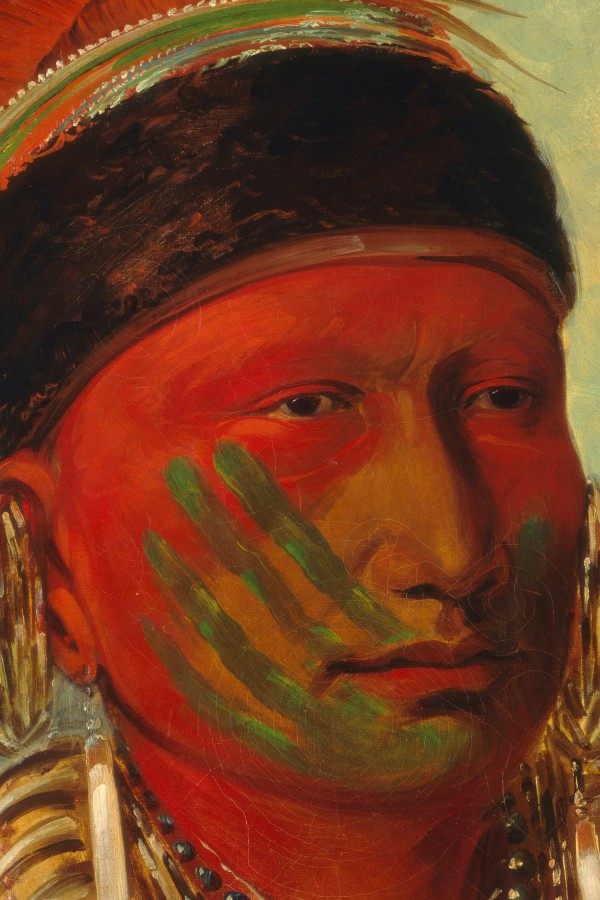White Cloud of the Iowas, 1844–1845

Date: 1844–1845
Creator of the image: George Catlin Date of the image creation: 1844–1845 Medium of the image: Oil on canvas Person depicted: White Cloud of the Iowas, or Mew-hu-she-kaw This portrait by George Catlin (1796–1872) was painted in 1844, twenty years after the Iowa tribes had been forced from their ancestral lands into small reservations. This had been a brutal process that intensified with the US Government’s 1830 Indian Removal Act. George Catlin was famous for his extensive portraits of Native Americans. He met White Cloud not in his ancestral homelands but in London. White Cloud and his family were touring as performers in a travelling circus showing ‘cultural curiosities’ from across the empires. According to the US National Gallery of Art, ‘Catlin painted this portrait of White Cloud when the chief and a small party of Iowa joined the artist in France to promote a European tour of his Indian Gallery. The tour included a stop in Paris, where the Iowa performed before King Louis Philippe.’ Catlin’s romantic portrait stands in stark contrast to White Cloud’s circus conditions. He portrayed him as a respectable, resplendent warrior, a man both sombre and proud, who bears hardships with an indomitable dignity. ‘His face is painted in glowing vermillion with a green a handprint across his cheeks, a sign that he was skilled in hand-to-hand combat. He wears a headdress of two eagle feathers and deer’s tail (also dyed vermillion) and a black band across his forehead made of otter fur. His earrings are made of carved conch shells. White wolf skin covers his shoulders over his deerskin robe and he wears a necklace made of grizzly bear claws, which testifies to his superior skill as a hunter’. (Farisa Khalid) Nineteenth-century French novelist George Sand said upon seeing the portrait of The White Cloud as it toured Europe: ‘Robed in his most splendid costume, his face gleaming with precious vermillion paint, he sits, like the prince he is, among his proud acolytes, solemnly smoking his pipe. [He is] a modern Jason.’ This comparison with a Greek mythological hero was relatively common in the period where Native Americans where alternately portrayed as a vanishing noble race, or as godless savages daring to impeded the glory of Manifest Destiny.
Quotes
No quotes found.
Login to add a quote